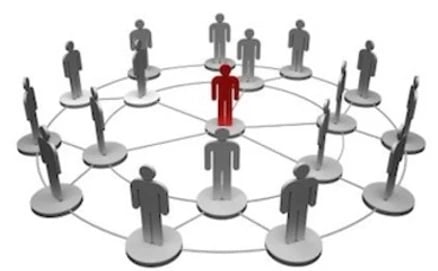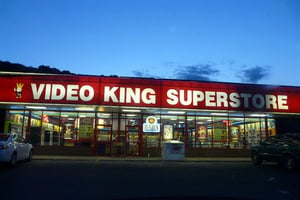Nov 21, 2013
All relationships are Social.
Mar 15, 2012
‘The Channel of Me’ in Context
Over the last 20 years multiplying channels and fragmenting audiences demanded a new paradigm in which business develops lifetime relationships with customers as individuals. Heralded and named by Lester Wunderman, data-based or one-to-one relationship marketing became the fastest-growing aspect of marketing. Founded 50 years ago his eponymous agency grew to become a global leader in building business value through customer relationships.
Now with the advent of ‘web 2.0’ new search, social and collaboration technologies are enabling new consumer behaviors – or are simply facilitating a deep and long-standing consumer need for control, connection and community. Mass marketers patently cannot and do not succeed by reaching out to a general audience using general broadcast or print media. Similarly, direct or one-to-one marketers cannot succeed by pushing messages to consumers through new media in the same way as they did through traditional media like direct mail.
The old selling and telling models have lost momentum. Privacy inhibits consumers from providing personal information (nor have marketers collectively delivered a positive and valued experience in exchange when consumers do offer their profile data). The do not call registry has silenced telephones. Banner click through rates are lower than response rates to traditional direct mail. On-line ad and pop-up blockers have blunted digital advertising and it is estimated that by 2010 50% of consumers will routinely use advertising blocking technologies. The media landscape is changing and consumers will become increasingly elusive.
Yet in one second today:
- 9 people log onto the web for the first time
- 27 podcasts are downloaded
- 17 blog entries are made
- 600 searches occur
- 2 million emails are sent
The maturing technologies that enable these seismic shifts have created two consumer mega-trends – the “Channel of Me” and the “Channel of We.”
In the Channel of Me, technology enables the individual. I want what I want—when, how and where I want it.
- Every search is a consumer directing media content.
- Every online experience is an example of a consumer seeking relevance and value.
- Offline DVRs are tools enabling consumers to ignore media content selectively.
- Online RSS feeds, podcasts and iPods: give consumers control.
Marketing has shifted in emphasis from push to pull. In-control consumers demand richer and more relevant experiences, and will choose where, when and how to consumer the media.
Social Computing
"People build brands as birds build nests, from scraps and straws we chance upon. Brands ultimately belong to the consumer, who holds the ultimate power in determining whether a brand thrives or dies."
Jeremy Bullmore, WPP
Technology has fueled an explosion in the nature of the media that consumers can choose. And the defining feature of the recent wave of tools is that they enable social interaction, collaboration and community.
Social computing is the technology infrastructure that puts power in the hands of communities of customers rather than institutions. Adoption has been rapid: 22% of adults now read blogs at least monthly; 19% are members of a social networking site; almost one-third of all youth publish a blog at least weekly, and 41% of youth visit a social networking site daily .
Over 120,000 blogs are now created every day. In a ranking of inbound sources to sites, blogs are increasingly competing with mainstream media for Mindshare. Engadget and Slashdot, for example, rank above Business Week and Bloomberg.
Social computing powers the customer voice in different ways:
- Discussion forums and user review sites let people find others' opinions.
- Comparison shopping and pricing sites let customers make objective product comparisons and research purchase options
- Blogs quickly propagate good and bad news
- Search engines make it easier to find consumer-generated content
- RSS feeds help consumers digest the flood of content.
- P2P eCommerce sites enable person-to-person purchasing.
The reach and authority of the mass media are in sustained decline. As reach has declined channels have multiplied and audiences have fragmented. As authority has declined consumer trust has shifted from top down messages from government and media to bottom-up, peer-to-peer connections and social networks.
Consumers are more than twice as likely to trust ‘completely’ recommendations from other consumers over brand and traditional sources of information. And the early forms of digital advertising – online banner ads and text ads on mobile phones – are among the least trusted sources of information of all!
The credibility of the traditional media is declining as the social media expand in reach.
The feedback of our peers is immediately available: good and bad news travel instantaneously.
Online banner ads and mobile text messaging are the last trusted – and their open and click through rates have fallen to negligible levels, almost like un-targeted ‘push’ direct mail.
Social Networking is ‘The Channel of We’
The Channel of We is the set of many to many relationships formed among customers in their communities and social networks. These matter as much as the traditional concern of marketing, the one to one relationships between businesses and consumers.
With this mega-trend comes a new definition of value and a new metric. Consumers are defining value as a social currency that can only exist in communities with scale and trust: influence.
Consumer behavior towards brands is no longer a meter of commerce. Consumer behavior now has a new dimension: engagement.
Marketers must now study and form insights into the behavior of consumers in their social networks as well as individuals. And social networking behavior forces change not only in how businesses communicate but in how they behave. There is no alternative to being inclusive, open and honest. Social networking forces redefinition of the consumer value proposition.
There is a new dimension in which value is created by users and amplified by collaboration among consumers in the use of a product or service. Social networking forces brands to include the consumer throughout their value chain, not simply at the end of the distribution line.
Excitingly, Marketing has a new dimension in which the goal becomes the engagement and participation of consumers in the co-creation of value.
In particular social networking forces a re-articulation of relationship marketing. In a many-to-many world it is no longer necessary to capture personal identity to engage the customer one-to-one. Marketers can scale their online engagement of consumers in their social networks without demanding their personal identity.
Word of mouth has always been recognized as a powerful force in marketing, but it has never been measured for integrated in planning. Powered by digital technology and 24/7 access, word of mouth – the customer voice in many-to-many conversations - is now a critical driver of sentiment and behavior in the marketplace. And it can be analyzed and leveraged to develop social marketing.
Social Networking Changes the Marketing Landscape
The idea of ‘permission’ marketing is not new but it now captures the reality of a marketplace in which the customer is in control.
As marketers we now understand that we must offer value in exchange for engagement, and in particular in exchange for customer to provide personal information as well as participate in marketing (as opposed to shunning our messages). We can earn the consumer’s permission at different levels, from anonymous and passive to personally identified and highly participative.
‘Engagement’ is the overarching social media currency and the new metric. Engagement can be measured in two ways Firstly using social analytics e.g. measures of influence and connection, participation in content at different levels, and topic and sentiment measurement tools. Secondly, using traditional measures of response, click rates, downloads etc.
As marketers we now understand that we can engage customers in deeply immersive ways, in particular through customer generated content and their co-creation of value for a product, and for their peers consuming the product. And we now understand that the new media and channels that enable engagement are social and are increasingly owned and published by customers themselves and not through the commercial media. Our goal should now be permitted, scalable customer engagement that will drive product value and marketing reach and impact.



